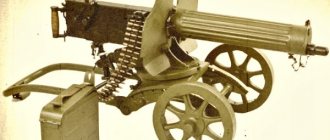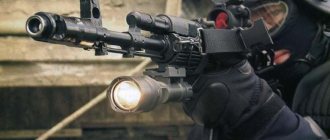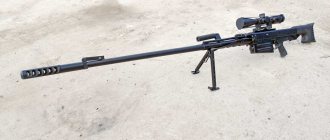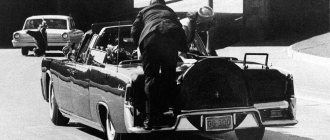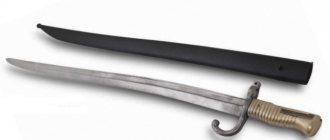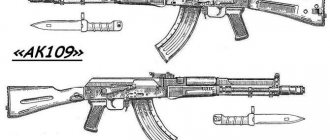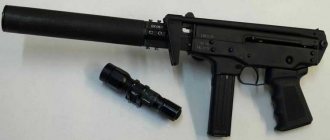development
In 1897, the C-93 Borchardt pistol was submitted for testing to the Swiss Military Test Committee.
The committee found Borchardt to be too heavy and bulky to serve as a military lateral. Georg Luger was tasked with the DWM with improvements to the Borchardt pistol. He developed the 7.65x21mm Parabellum cartridge from the 7.65x25mm Borchardt. By shortening the sleeve, Luger was able to design a narrower grip, and the shift action required a shorter stroke than Borchardt's original design. A transitional Borchardt-Luger model of the new caliber was presented to the Swiss commission in 1898. After further improvements, the final result became the DWM Pistole-parabellum ("Luger pistol"). The new cartridge loading was standardized and mass production began in 1900–1901 at the DWM plant in Karlsruhe, Germany. Around 1903, a separate load was developed for Parabellum carbines, with approximately 20% more powder (increasing from the standard 0.32-0.35 g to 0.4 g) and a blackened cartridge case. This load carbine was produced until sometime after the First World War.
Modern Russian versions of the 9×19 mm cartridge
| External images |
| [cdn.topwar.ru/uploads/posts/2012-01/1325795284_02.jpg (from left to right): 9x19.000 Ulyanovsk Mechanical Plant, 9x19 PSO Tula Cartridge Plant, PS (7 N21), PBP (7 N31), cartridge with a bullet with reduced ricocheting ability and a lead core] (inaccessible link) |
The production of commercial 9x19 mm cartridges in Russia began in the 1990s, initially for export. At the turn of the 1990s-2000s, a decision was made to switch to a new standard 9x19 mm cartridge for the army and the Ministry of Internal Affairs. For new weapon models, new modifications of the cartridge with improved ballistic and tactical-technical characteristics were developed.
- 9x19 PS gzh
(GRAU Index -
7N21
) - cartridge with a bullet with a steel core. Developed by TsNIITochmash in the early 1990s. Bullet weight - 5.4 grams, initial bullet speed - 445-470 m/s. It is superior in power to commercial 9x19mm Parabellum ammunition and equal to the more powerful military 9x19mm NATO (9x19 +P) cartridges. The bullet pierces a 4-mm plate of St.3 steel at a distance of 55 m. - 9x19 PBP gzh
(GRAU Index -
7N31
) - a cartridge with a bullet of increased penetration. Developed by the Tula Instrument Engineering Design Bureau in the early 2000s for the GSh-18 pistol. The semi-jacketed bullet of the 9×19 PBP cartridge has a heat-strengthened steel core, bare at the head. The shirt is made of aluminum alloy. The mass of the bullet is 4.1 grams, the average initial speed of the bullet is 550 m/s. The high speed and design features of the bullet ensure reliable penetration of body armor of the 2nd protection class according to GOST R 50744-95. When used in combination with a new cartridge with increased penetration (7N31), it ensures penetration of class 2a body armor or 8-mm steel plate at a distance of at least 20 m. - 9x19 PP gs (gzh)
(GRAU Index -
7N30
) - a cartridge with a bullet of increased penetration. Developed in the late 2000s. KBAL named after. L.N. Koshkina together with the Tula Cartridge Plant. The mass of the bullet is 5.5-5.8 grams, the initial speed of the bullet is 420-445 m/s. The bullet pierces a 4 mm steel plate St.3 at a distance of 60 m, and a bulletproof vest Zh-86-2 at a distance of 25 m. - 9x19 P gzh
(GRAU Index -
7N35
) - a cartridge with a bullet with a lead core. Developed by TsNIITochmash, not mass-produced. - 9x19 T gzh
(GRAU Index -
7T4
) - cartridge with a tracer bullet. Developed by TsNIITochmash, not mass-produced. - 9x19 PRS GS
- cartridge with reduced ricochet ability. Developed and mass-produced by Barnaul Machine Tool Plant OJSC. The mass of the bullet is 7.47 grams, the initial speed of the bullet is 345-385 m/s. - 9x19 PSO gzh (gs, gl)
- sports cartridge. Serially produced by the Tula Cartridge Plant. The mass of the bullet is 7.46 grams, the initial speed of the bullet is 340 m/s. - 9 mm Luger
is a sporting and hunting cartridge. Serially produced by PKP AKBS LLC, Barnaul Cartridge Plant CJSC and Novosibirsk Cartridge Plant CJSC. - 9x19 Volga Federal District
- cartridge of federal authorities. Serially produced by the Tula Cartridge Plant. Steel sleeve with polymer coating, two seed holes; Berdan capsule. - 4.5x19
- double-medium cartridge. Developed by the Tula Instrument Engineering Design Bureau in the 2010s for firing the GSh-18 pistol underwater.
History and use
Swiss Army 7.65 Parabellum latest batch
Swiss Parabellum Model 1900 service pistol
Since its introduction, 7.65×21mm Parabellum ammunition has been produced in several countries both for domestic use and for export, including Germany, Switzerland, Finland, France, Portugal, Brazil, the United Kingdom and the United States.
With the adoption of the 1900 Luger Parabellum model pistol in 1900, the 7.65mm Luger became the standard pistol cartridge of the Swiss Army until the late 1940s. A later Swiss military pistol, the SIG P210, was also manufactured in this caliber, but only for civilian use; Swiss military issues of the P210 were chambered in 9×19mm Parabellum.
The 7.65 Parabellum was replaced by the German Army with the 9×19mm Parabellum cartridge. This involved simply expanding the bottleneck of the 7.65 Luger cartridge to accept a 9mm bullet. Due to the nearly identical case width, rim width, and overall length of the cartridges, most 7.65mm Parabellum firearms can be converted to 9mm Parabellum, and vice versa, only with a barrel change.
The Luger pistol in 7.65 mm was adopted by the Finns in 1923 with the designation Parabellum Pistooli 23,
abbreviated m/23. About 8,000 pistols were delivered, but few survived the war. Many of these pistols were rebarreled to 9 mm, and a limited number were retained until 1980 to equip non-combat personnel. The Finnish Lahti L-35 pistol, a 1929 design introduced in 1935 to replace the Luger pistol, was also originally chambered 7.65 Parabellum before it too was switched to 9 mm Parabellum.
Around 1900, the Brazilian military adopted the round for use in the German-made Parabellum pistols (partially replacing the Simson Nagant style revolver), and later in some Schmeisser MP-28 II submachine gunners, made in Belgium under license. It remained in limited use by some police forces through the 1970s, such as the former Guanabara State Police (based in Rio de Janeiro).
In addition to the Luger Parabellum and SIG P210, several other pistols were produced in this caliber, primarily for commercial sale in countries that restrict civilian use of modern military calibers such as the 9mm Parabellum. Examples include the Astra A-80, Benelli B80, Beretta M952, Beretta 92, Walther P38 and P38K (K in this caliber = very rare), Browning Hi-Power, Mamba, some Ruger P series models and Sig Sauer P220.
Several assault rifles were manufactured in this caliber, notably the SIG Bergmann 1920 (a licensed Swiss version of the Bergmann MP-18/1), the Swiss Furrer submachine gun and its double-barreled antenna counterpart the Flieger-Doppelpistole 1919, the M/Neuhausen MKMS, the Austrian MP34 and the Suomi M -26.
The name comes from the Latin phrase si vis Pacem, para Bellum
- “If you want peace, prepare for war.”
Using a 7.65x17 mm bullet
Currently, due to the legislation of the Russian Federation, the free use of the 32 Auto bullet for the purpose of reloading and loading cartridges is strictly prohibited. Officially, the ban looks like Article 223 of the Criminal Code of the Russian Federation, and it implies the possibility of imprisonment for up to two years for violating it.
However, if you have a special license, you can buy 7.65 bullets for the purpose of using them as material for active cartridges of the specified caliber absolutely freely. Using Beretta or other, less common pistols of this caliber as a hunting weapon is absolutely irrational (due to low accuracy and low destructive power); using 32 ACP bullets as a means of self-defense is illegal. For this reason, the main use of bullets of this caliber is personal or group accuracy training in the form of target shooting.
It is worth noting separately that the manufacture of weight and size mock-ups of a cartridge of the specified caliber using the bullets described above is not illegal even in the absence of a license. The MMG differs from the cartridge in the complete absence of a powder charge and a hole punched in the lower part of the cartridge case, guaranteeing complete safety of the cartridge.
cartridge sizes
The 7.65 × 21 mm Parabellum has a 0.93 ml (14.3 grains of H2O) cartridge body capacity.
7.65 × 21mm Maximum dimensions Parabellum CIP cartridge
. All dimensions are in millimeters (mm).
The overall rifling twist rate for this cartridge is 275 mm (1 in) in 10.83, 4 grooves, ø = 7.62 mm, groove diameter = 7.83 mm, width = 3.05 mm and the primer type is small gun . This cartridge headspaces is up to the task.
According to the official CIP (Permanent International Commission for the Testing of Handguns) guidelines, the 7.65×21mm Parabellum case can handle up to 235 MPa (34,100 psi) piezo pressure. In CIP regulated countries, each gun combination cartridge must be equipped with a device at 130% of the maximum CIP pressure to be certified for sale to consumers.
Performance characteristics and brief information
| Type | Semi-automatic pistol |
| Place of origin | German Empire |
| Service history | German Empire (1904-1918) Weimar Republic (1919-1933) Nazi Germany (1933-1945) Switzerland (1900-early 1970s) Other countries (1900 to present) |
| Used | World War I Spanish Civil War World War II Second Sino-Japanese War Indonesian National Revolution Chinese Civil War Korean War (limited use) Vietnam War (limited use) |
| Developer | Georg J. Lueger |
| Designed | 1898 |
| Manufacturer | Deutsche Waffenund Munitionsfabriken |
| Years of production | 1900-1942 |
| Total produced | 2,800,000 (P08) 285,000 (mod.1900) |
| Weight | 871 g |
| Length | 222 mm |
| Barrel length | 120 mm |
| Caliber | 7.65 × 21 mm Parabellum 9 × 19 mm Parabellum |
| Initial bullet speed | 350-400 m/s |
| Effective firing range | 350-400 m/s 50 m |
| Magazine capacity | 8 and 32 rounds on drum magazine |
Browning 1910 pistol - video
It seemed that everything in the Browning was perfect, every detail was made with amazing simplicity and grace,” as described by the famous Soviet gunsmith designer M.T. Kalashnikov his feelings from his first acquaintance with the Browning pocket pistol as a teenager. The success that accompanied the first pistols of the Browning design encouraged the Belgian (FN) to consolidate it with new models. In 1910, FN introduced a new 7.65 mm self-loading pistol to the market.
Browning 1910 pistol caliber 7.65 mm
The Model 1910 pistol (Model 1910) was considered a more powerful “pocket-type” weapon than the 6.35-mm Browning 1906, which had already conquered the market. American gunsmith John Moses Browning, who had been collaborating with FN for more than ten years, once again once again confirmed his reputation as an excellent designer. Model 1910, combining new design solutions with those already found in the previous model, was very compact, distinguished by streamlined external contours, ease of wearing and holding. The pistol had reliable safety locks against an accidental shot, which, however, did not reduce its readiness to fire. It is not surprising that in 1911–1914. he managed to gain considerable popularity.
The automatic operation of the Model 1910 Browning pistol worked based on the recoil of the free shutter. A significant innovation was the layout of the mechanisms, and above all, the location of the bolt return spring. In this model, it is put on the barrel and held on it by a coupling in the front of the bolt (a scheme previously specifically patented by Browning). The striker-type trigger mechanism only works with pre-cocking of the striker. The first cocking is performed by jerking the bolt to chamber a cartridge in front of the 7.65 mm Browning 1910 model pistol. the first shot.
Browning 1910 pistol caliber 9 mm
The safety of handling the pistol is ensured by three fuses - non-automatic flag, automatic frame and magazine. The non-automatic safety flag is located on the left side at the rear of the frame; in the upper position it blocks the shutter. It is turned off by moving the thumb of the shooting hand from top to bottom. At the back of the pistol handle there is an automatic safety device in the form of a push button. It blocks the trigger pull and turns off only when the handle is fully covered with the palm and only after the safety switch is turned off. The magazine safety locks the automatic safety button when the magazine is removed and thereby prevents a shot in case there is a cartridge left in the chamber - this ensures safety when disassembling the weapon.
The cartridges are fed from a single-row detachable magazine. The sighting device includes a low-profile front sight and sight. But often the pistol was made without a sight - when shooting at short ranges, quick aiming was possible along the upper edge of the bolt. In 1912, Fabric National began producing the Model 1910 pistol in a 9-mm version - chambered for a 9-mm cartridge known as the “Browning short” (9x17, .380 ACP) with a 6-round magazine. The pistols were sold to a number of countries, including Russia. In January 1914, the Russian War Ministry authorized "Browning pistols of 7.65 and 9 mm caliber (pocket type)" for purchase by army officers at their own expense. In Russian documents this model was called the “Browning III model”. FN continued production of the Model 1910 in both calibers until the end of World War II. In 1955, the company resumed production of the 9 mm model and continued it until 1969, which in itself indicates the popularity of the pistol. The Model 1910 was copied in Spain from 1920-1935. In Germany, the same model was copied by DWM.
Partial disassembly of a 1910 Browning pistol
In 1922, by order of the Kingdom of Serbs, Croats and Slovenes (later the Kingdom of Yugoslavia), model 1910/22 or, for short, 10/22 chambered for the 9-mm Browning short cartridge. The model featured an increased barrel length and a magazine capacity of 8 rounds. To reduce production costs, a bolt of the same design was used, increasing its length simply by using a front attachment attached to the bolt with a bayonet connection. In addition, a ring for a safety strap appeared at the bottom of the handle. Otherwise the design has remained the same. The pistol was also produced chambered for the 7.65 mm Browning cartridge with a 9-round magazine.
In addition to Yugoslavia, the 10/22 model was also purchased for the armies of Belgium, Holland, Greece, Turkey, France, and during the Spanish Civil War it was purchased by the Republican government. After the occupation of Belgium during World War II, the pistols were supplied to the German Wehrmacht, where the model 1910 was designated Pistole 621(b), model 10/22 - Pistole 626(b). In Belgium, 7.65 mm pistols of this model remained in service with police departments and gendarmerie for a long time, and in France - with the Paris police. In a number of third world countries, Brownings of the 1910 and 10/22 models were used until the 1980s.
Pistol Browning model 1910/22 caliber 7.65 mm
Weapons using cartridge
See also category: Weapons chambered for 9 × 19 mm Parabellum
|
|
|
|
Performance characteristics of the 1910 Browning
— Designer: John Browning — Manufacturer: Fabrique Nationale (FN) — Years of production: 1910—1983
Cost of a copy : approximately 15 gold rubles
Wes Browning 1910
- 1910 model - 0.590 kg. - 1922 model - 0.700 kg.
Dimensions of the 1910 Browning
— Length, mm: model 1910 — 153 mm; model 1922 - 178 mm - Barrel length, mm: model 1910 - 88 mm; model 1922 - 113 mm
Browning cartridge 1910
- 7.65x17 SR (7.65 mm Browning, .32 ACP) - 9x17 (9 mm Browning short, .380 ACP)
1910 Browning bullet speed
— 282 m/s model 1910 — 270 m/s model 1922
Browning 1910 magazine capacity
- 1910 model - 7 (.32) or 6 (.380) rounds - 1922 model - 9 (.32) or 8 (.380) rounds
Operating principles: blowback; Single action trigger Sight : Front and rear sight
Partial disassembly of the Browning pistol model 1910/22
Similar
AK-47 assault rifle cartridge caliber 7.62 mm. Device. Rate of fire
AK-74 assault rifle cartridge caliber 5.45 mm. Device. Rate of fire
Dragunov SVD sniper rifle caliber 7.62 mm. Device
AKS-74U assault rifle cartridge caliber 5.45 mm. Device. Weight
Mauser K96 pistol cartridge caliber 7.63 and 9 mm. Device
Pistol Walter PP / PPK cartridge caliber 7.65 and 9 mm. Device
Pistol Yarygin PYa Grach cartridge caliber 9 mm. Device
DShK machine gun cartridge caliber 12.7 mm. Device. Rate of fire
Luger pistol R.08 Parabellum cartridge caliber 9 mm. Device
Pistol PM cartridge caliber 9 mm. Rate of fire. Dimensions. Bullet speed. Sighting range
Self-loading shotgun Saiga-12 cartridge, caliber. Device
Maxim machine gun cartridge caliber 7.62 mm. Device. Weight
PPSh-41 Shpagina submachine gun cartridge caliber 7.62 mm
APS Stechkin pistol cartridge caliber 9 mm. Device
Nagan system revolver cartridge caliber 7.62 mm. Device
Kalashnikov PK machine gun and PKM cartridge caliber 7.62 mm. Device
Simonov carbine SKS-45 cartridge caliber 7.62 mm. Device
Rifles and carbines Mauser 98 caliber 7.92 mm. Device
PPS-42 and PPS-43 Sudaev submachine gun cartridge caliber 7.62 mm
Pistol Walter P38 cartridge caliber 9 mm. Device
MP-40 German submachine gun cartridge caliber 9 mm. Device
VSS Vintorez sniper rifle caliber 9 mm. Device
Submachine gun PP-91 Kedr cartridge 9 mm caliber. Device
Light machine gun RPK-74 cartridge caliber 5.45 mm. Device
Pistol Glock 17 cartridge caliber 9 mm. Device
Makarych, Izh-79-9T, MR-79-9TM, MP-80-13T traumatic pistol
AK-12 assault rifle cartridge caliber 5.45 mm. Device. Weight
Mosin rifles and carbines Three-line caliber 7.62 mm
PMM Makarov pistol modernized 12 rounds. Device
Revolver Colt Single Action Army (SAA) Peacemaker. Device
Machine gun PKP Pecheneg cartridge caliber 7.62 mm. Device
Sniper rifle VSSK Exhaust caliber 12.7 mm. Device
Beretta pistol 92 cartridge caliber 9 mm. Device
TT - Tokarev pistol cartridge caliber 7.62 mm. Device
Submachine gun PP-19 Bison cartridge caliber 9 and 7.62 mm. Device
Sniper rifle SV-98 caliber 7.62 mm. Device
Vladimirov KPV machine gun cartridge caliber 14.5 mm. Device
ASH-12 assault rifle cartridge caliber 12.7 mm. Device. Rate of fire
PSM pistol cartridge caliber 5.45 mm. Device
Pistol Colt M1911A1 cartridge caliber 45. Device
Smith-Wesson revolver Russian cartridge, caliber 10.67 mm. Device
Degtyarev DP-27 light machine gun, 7.62 mm caliber cartridge. Device
Shotgun Mossberg 500 Cartridge. Dimensions. Rate of fire. Sighting range
Thompson submachine gun cartridge caliber 11.43 mm. Device
Pistol USP Heckler und Koch cartridge, caliber. Device
Hunting carbine OSK-88 (SVT-40) caliber 7.62 mm. Device
AS Val silent automatic cartridge caliber 9 mm. Device
Submachine gun PP-19-01 Vityaz cartridge 9 mm caliber. Device
Machine gun Kord cartridge caliber 12.7 mm. Device. Weight. Sighting range
Osa - traumatic pistol cartridge, caliber. Device
AK-9 assault rifle cartridge caliber 9 mm. Device. Rate of fire
Degtyarev RPD light machine gun, 7.62 mm caliber cartridge. Device
Automatic OTs-14 Groza cartridge caliber 9 mm and 7.62 mm. Device
Czech pistol CZ-75 (modifications). Device
Browning pistol 1903 cartridge caliber 9 mm. Device
Sniper rifle OSV-96 caliber 12.7 mm. Device
FN P90 submachine gun cartridge caliber 5.7 mm. Device
Submachine gun OTs-02 Cypress cartridge caliber 9 mm. Device
Sniper rifle ASVK Kord caliber 12.7 mm. Device
Automatic AEK-971 Cartridge. Caliber. Device. Rate of fire
Steyr AUG assault rifle (A1, A2, A3) cartridge caliber 5.56 mm
AK series 100 assault rifles. Modifications. Device. Weight. Dimensions
Uzi submachine gun. Cartridge. Caliber. Rate of fire
Pistol SR1M Gyurza cartridge caliber 9 mm. Device
Pistol GSh-18 cartridge caliber 9 mm. Device
SVDK sniper rifle caliber 9.3 mm. Device
Automatic SR-3M Whirlwind cartridge caliber 9 mm. Device
Machine gun NSV-12.7 Utes cartridge, cal. Device. Weight
Kalashnikov RPK light machine gun cartridge caliber 7.62 mm. Device
Sniper rifle VSK-94 caliber 9 mm. Device
Vostok-1 (Jorge-3M) 9mm caliber traumatic pistol. Device
Degtyarev PPD submachine gun cartridge caliber 7.62 mm
English sniper rifle L96A1 cartridge, caliber
M1 Garand rifle cartridge caliber 7.62 mm. Device
Desert Eagle pistol. Device
Smith-Wesson revolver (modifications). Device
Automatic rifle HK G36 (E, K, C, KE) cartridge caliber 5.56 mm
Pistol P-96 cartridge caliber 9 mm. Device. Rate of fire
Pistol GP35 Browning High Power cartridge, caliber. Device
Assault rifle FN SCAR (L, H) cartridge caliber 5.56 and 7.62 mm
Revolver Lefoshe M1856 cartridge caliber 11 mm. Device
Submachine gun PP-90 cartridge caliber 9 mm. Device
AN-94 Abakan automatic Nikonov cartridge caliber 5.45 mm. Device
Submachine gun PP-2000 cartridge caliber 9 mm. Device
Mauser pistol HSc cartridge caliber 7.65 and 9 mm. Device
M16 automatic rifle cartridge caliber 5.56 mm. Device
Fedorov assault rifle cartridge caliber 6.5 mm. Device. Rate of fire
Pistol Baltiets cartridge caliber 7.62 mm. Device
Strizh pistol cartridge caliber 9 mm. Device. Weight. Sighting range
Browning pistol 1910 cartridge caliber 7.65 and 9 mm
Silent pistol PSS Vul cartridge caliber 7.62 mm. Device
Pistol SIG-Sauer P226 cartridge caliber 9 mm. Device
Pistol OTs-27 Berdysh cartridge caliber 7.62 mm and 9 mm. Device
AK-107 assault rifle cartridge caliber 5.45 mm. Device. Rate of fire
OTs-44 sniper rifle, caliber 12.7 mm. Device
German machine gun MG3 cartridge caliber 7.62 mm. Device
Self-loading shotgun Browning Auto-5 cartridge, caliber. Device
Submachine gun AEK-919K Kashtan cartridge caliber 9 mm. Device
PB pistol silent cartridge 9 mm caliber. Device
Pistol OTs-33 Pernach cartridge caliber 9 mm. Device
Hunting carbine KO-98 cartridge caliber 7.92 mm. Device
TK (Korovin pistol) caliber 6.35 mm. Device. Weight. Dimensions
Underwater assault rifle APS cartridge caliber 5.66 mm. Device
Pistol OTs-21 Malysh cartridge caliber 9 mm. Device
American M60 machine gun, 7.62 mm caliber cartridge. Device
MTs-116M sniper rifle, caliber 7.62 mm. Device
Automatic 9A-91 cartridge caliber 9 mm. Device. Rate of fire
Submachine gun PP-93 cartridge caliber 9 mm. Device
VAG-73 - Gerasimenko pistol. Device. Weight. Dimensions
Cordon-5 is a traumatic pistol. Device. Weight. Dimensions
Goryunov SG-43 heavy machine gun cartridge caliber 7.62 mm. Device
Webley revolver cartridge, caliber. Device. Dimensions. Weight
Machine gun AEK-999 Badger cartridge caliber 7.62 mm. Device
RP-46 machine gun, 7.62 mm caliber cartridge. Device. Rate of fire
Sniper rifle VS-8 cartridge caliber 8.6 mm. Device
Slostin machine gun cartridge caliber 7.62 mm and 14.5 mm. Device
Assault rifle Tavor TAR-21 cartridge caliber 5.56 and 5.45 mm
Submachine gun SR-2 Veresk cartridge caliber 9 mm. Device
Lancaster pistol cartridge caliber 12.1 mm. Device. Rate of fire
Submachine gun PP-90M1 cartridge caliber 9 mm. Device
Underwater pistol SPP-1M. Device. Weight. Dimensions
Traumatic pistol MP-461 Guard. Device. Weight. Dimensions
Lebel rifles and carbines are cartridgeed in 8 mm caliber. Device
Automatic A-91 cartridge caliber 7.62 mm. Device. Rate of fire
M14 automatic rifle cartridge caliber 7.62 mm. Device
Revolver Smith & Wesson Model 10 Military & Police
Automatic rifle FN FAL cartridge caliber 7.62 mm. Device
Submachine gun STEN MK 2. Device. Weight. Dimensions
Traumatic pistol IZH-78-9T Chain mail cartridge caliber 9 mm
Leader-M traumatic pistol 11.43×32T. Device. Weight. Dimensions
Ingram M10 and M11 submachine gun. Device. Weight. Dimensions
Pistol Steyr M9-A1 cartridge caliber 9 mm. Device. Weight
Pistol OTs-23 Dart cartridge caliber 5.45 mm. Device
Berthier rifles and carbines caliber 8 mm. Device
Automatic shotgun USAS-12 cartridge caliber 18.5 mm
Sniper rifle VS-121 caliber 7.62 mm. Device
Traumatic pistol MP-353 cartridge, caliber 11.43 mm
Tiss machine gun cartridge caliber 9 mm. Device. Rate of fire
Traumatic pistol MP-355 cartridge caliber 9 mm. Device
Automatic double-medium ADS cartridge caliber 5.45 mm. Device. Rate of fire
Traumatic pistol MP-81 cartridge caliber 9 mm. Device
Pistols Zastava 70 and 70(k), cartridge caliber 7.65 or 9 mm. Yugoslavia
Sniper rifle GALATZ (Galil) cartridge caliber 7.62 mm
Pistol MP-444 Bagheera cartridge caliber 9 mm. Device
Revolver Colt New Army / Navy. Device. Bullet speed. Sighting range
Type 64 is a Japanese automatic rifle. Device
Interesting fact
The history of the creation of a self-loading pistol began in 1882, when Hugo Borchardt opened his own office in Budapest. It was then that he met Ludwig Lewe, who showed great interest in the Hungarian arms industry.
In 1890, Borchardt visited his company, where the young designer Georg Luger was already working. Soon after visiting the Lewe factory, Borchardt began work on creating a self-loading pistol.
Having patented a new pistol in 1893, he, according to some sources, tried to place its production at the Liege “Fabric National” and eventually reached an agreement with the Berlin manufacturer Ludwig Lewe.
One of the company's directors decided to make a sample of Borchardt's pistol as an experiment. Work on the new pistol lasted about 18 months. Thus the first commercially viable 7.65 mm semi-automatic pistol, the Borchardt C93, was born.
Order 7.65x17 mm bullets right now!
What if you want to buy 7.65 bullets? The simplest and most profitable solution is to place an order in our online store right now. This can be done in no time - you just need to fill out an application for home delivery (available only for Moscow) or mailing (available throughout Russia).
We guarantee the high quality of all products we sell. Defects do not go on sale if they do not pass our checks - therefore, the chance of buying a low-quality product with us is almost zero. Jacketed 7.65 bullets, which can be purchased through our store, fully meet their intended purpose and are ideal for legally loading ammunition of this caliber.
Features of various modifications of Luger
Third model
The first prototype of the P08, known as Versuchsmodelle III, which translated from German means experimental model 3, was tested by the Swiss army in 1898.
During testing, it was criticized by the Swiss commission due to excessive weight and an unbalanced center of gravity, which did not contribute to comfort during combat operations.
After this verdict, Luger returned to Berlin with the goal of remaking the pistol. The main decision of Luger and his company was to change the shape of the cartridge, which would subsequently lead to a transformation of the pistol itself and a reduction in its weight.
Repeated tests of the pistol took place in 1899, and already in 1900 the model was adopted by the Swiss army. The DWM company has entered into a contract for the supply of three thousand units of these small arms.
Pneumatic
The KWC P-08 Luger KMB41D pistol is made almost entirely from metal parts. The magazine is designed for 21 metal balls.
The initial speed of the bullet is 100 meters per second. The modification is equipped with a Blowback recoil simulator system.
Shumovoy
A modification of the ME Luger P-08 pistol was created to perform signal and noise operations. In it, as in the original version, the barrel is locked by a crank mechanism.
The pistol magazine is designed for four blank cartridge cartridges of 9 mm caliber, into which pistons are inserted. When a shot is fired, the cartridge cartridge flies out, creating a noise effect, while sparks or flames and smoke come out of the barrel. The fuse is also taken from the original, it is a flag type.
Characteristics:
| Bullet speed | 100 m/s |
| Energy source | CO2 gas cylinder |
| Material | Metal |
| Ammunition type | Metal balls |
| Recoil | Blowback simulation system |
| Magazine capacity | 21 |
| Caliber | 4.5 mm |
| total length | 220 mm |
| Sight type | Sighting bar and front sight |
| Weight (curb) | 0.840 kg |
